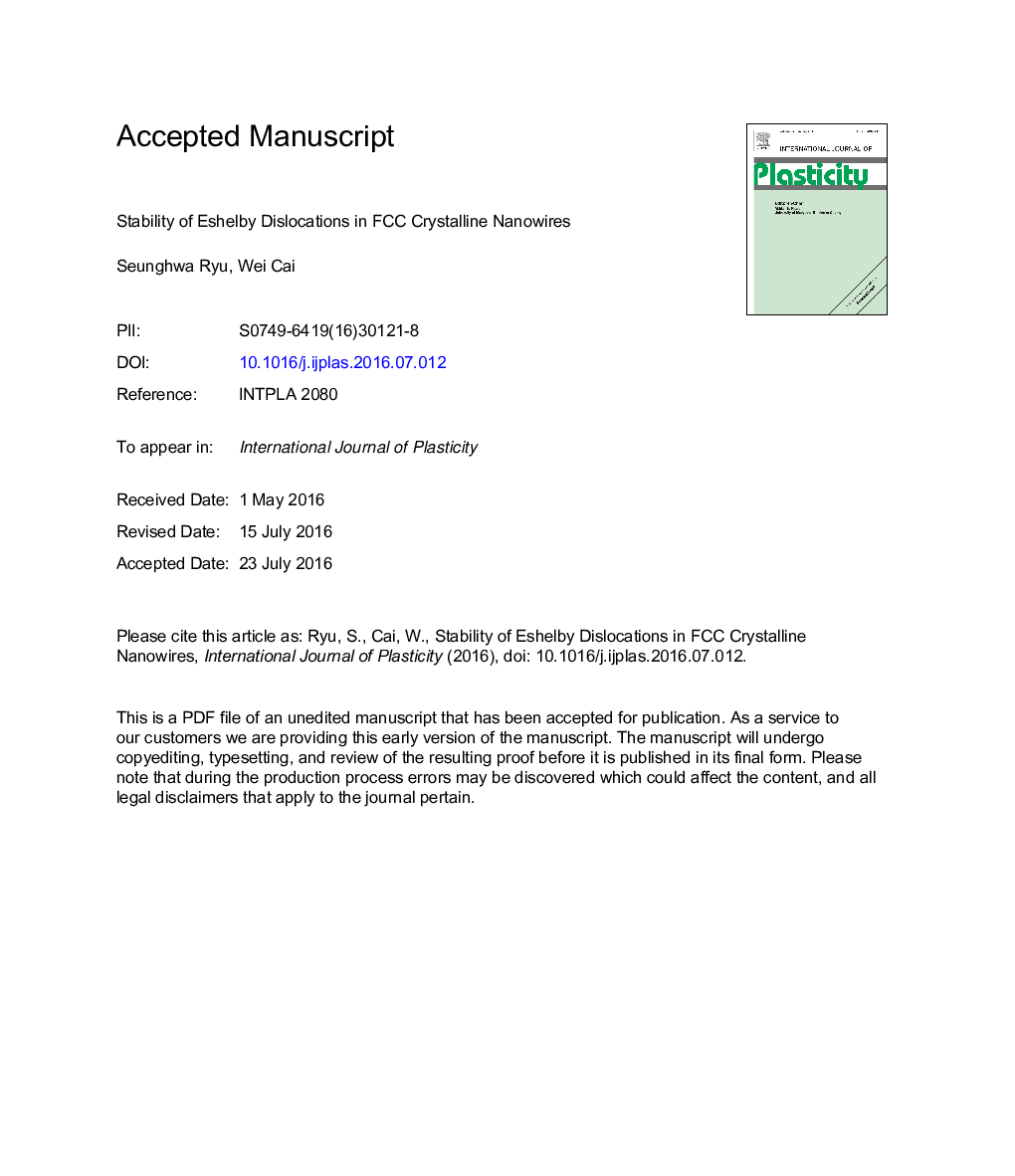| Article ID | Journal | Published Year | Pages | File Type |
|---|---|---|---|---|
| 5016829 | International Journal of Plasticity | 2016 | 31 Pages |
Abstract
The thermally activated escape of Eshelby dislocations in face-centered-crystal (FCC) nanowires of finite length with surface steps at the ends is investigated by combining atomistic and continuum models. The energy barriers for the dislocation escape from face-centered-cubic ã110ã nanowires are predicted from atomistic models as a function of nanowire radius, escape location, and surface step orientation. The dissociation of a dislocation into partials has a significant effect on the energy barrier. The dislocation prefers to escape from the end of nanowire with an extended node, where the dissociation width is greater than the equilibrium width in the bulk. The energy barrier is further lowered if the surface step aligns with the dislocation's slip plane. A continuum line tension model that accounts for partial dislocations is constructed and benchmarked against atomistic predictions for FCC nanowires. The continuum model is then used to make predictions on the stability of Eshelby dislocations over a wide range of nanowire radii.
Related Topics
Physical Sciences and Engineering
Engineering
Mechanical Engineering
Authors
Seunghwa Ryu, Wei Cai,
